This story from the Australian Aviation archives comes from July 2013, when Owen Zupp took the Diamond DA40 XLT on a flight test.
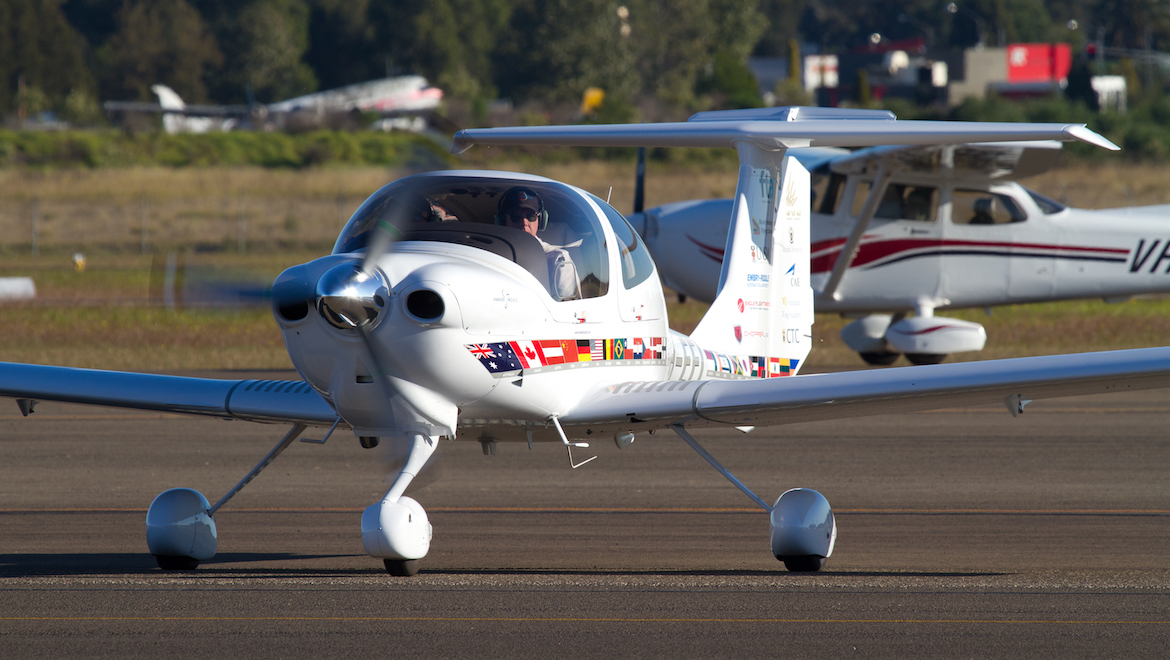
Unbelievably, it had been four years since I flew the Diamond DA40XLS. Now its latest derivative stands on the apron at Bankstown Airport displaying the flags of the many nations that operate this aircraft type. And while I am always keen to fly an aircraft, I can’t help but feel that this is an opportune time to see where Diamond has travelled.
The DA40 XLT
At first glance the DA40 XLT appears to be identical to its predecessor and partner the XLS. The familiar 180hp (135kW) Lycoming engine is still under the cowling of this particular DA40, however, the option of a fuel-efficient Austro diesel engine is now available.
Since its release the number of Austro engines has grown to 480 engines in circulation worldwide and growing every month. In that time they have accrued a total operating time of 200,000 hours, split between 150,000 on DA42s and 50,000 on the DA40.
It is within the cabin where there have been some subtle changes to enhance the XLT as a touring machine. The front seats are wider, while cleverly designed footwells in the rear significantly increase the leg-room and comfort level for passengers.
The seats feature new technology in their own right. Pioneered by BMW in its convertible cars, the seats incorporate infrared control technology into the leather upholstery. This feature reflects the sun’s infrared rays, resulting in a seat temperature that can be up to 20 degrees cooler than a traditional leather seat. It’s a welcome addition in Australian conditions from a manufacturer that sits well north of the equator.
There are other nice touches such as cup holders, centrally located four-place intercom jacks, large gasper vents for fresh air and additional pockets to accommodate smartphones and other electronic gadgetry. Sitting in the front or the rear, there is a sense of style stemming from the enhanced finish, but something on the outside has caught my attention.
On this DA40XLT, in addition to the flags of many nations along its flanks, the crests of numerous flight-training institutions adorn its fin. The scheme is quite appropriate as this XLT is on a demonstration tour with Hawker Pacific for three months and will wind its way through six Australian states in that time.
On that journey the DA40 will undoubtedly be showcased, but so will the fact that Diamond is no longer the new kid on the block, but now a well-established player in aircraft manufacturing.
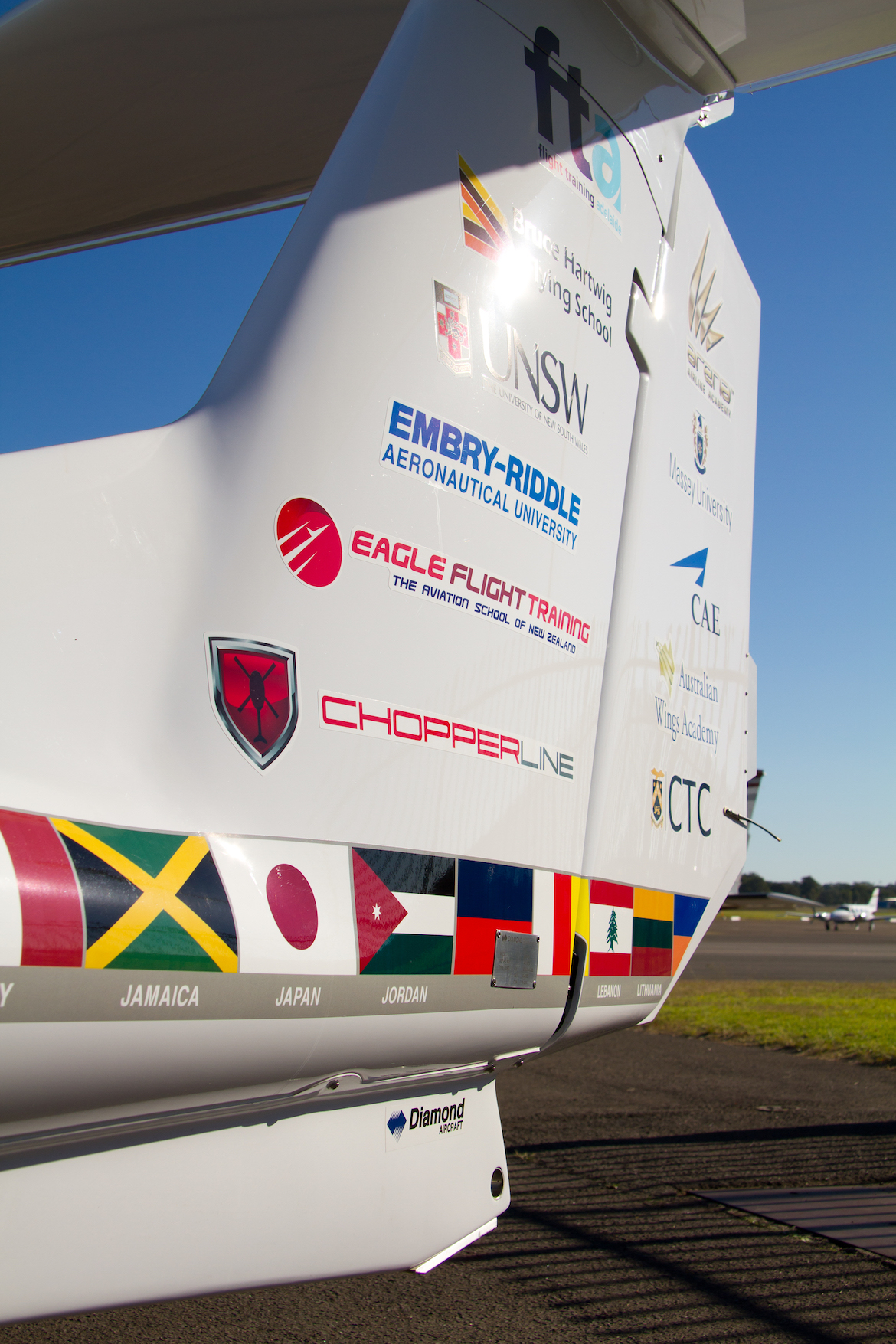
Putting runs on the board
Back in 2009 when I first flew the DA40 I was very impressed by the aeroplane. Yet, for all the advanced avionics and smooth aerodynamic feel that the aeroplane possessed, it was still a relatively new entrant in the Australian market. At times the debutant can be met with enthusiasm, but also a degree of reserve, and so it was for the Diamond.
Flying schools can be set in their ways and it can take quite an amount of convincing to unseat the incumbent aircraft types. The 30 flags worn by this DA40 would suggest that operators around the world are now convinced.
While the enhanced interior defines the XLT from its predecessor and enhances its touring appeal, it is as a flight trainer that tremendous inroads have been made by Diamond.
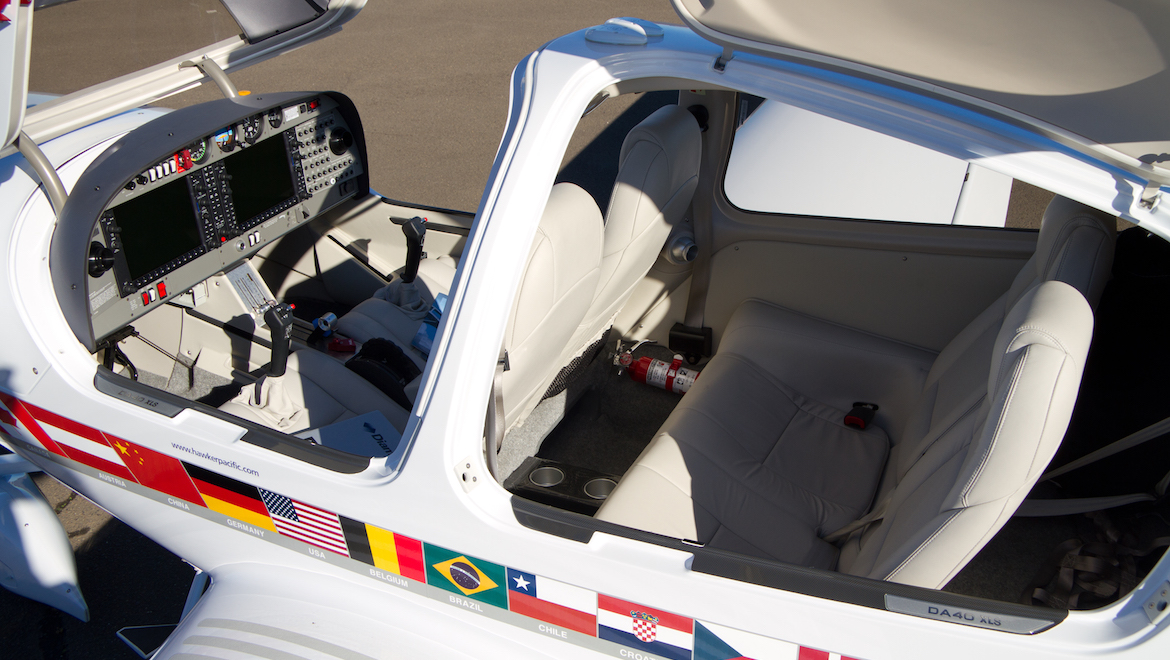
In the US, the USAF Academy employs 48 DA20s and Embry-Riddle boasts a significant fleet of DA40s. Between Australia and New Zealand there are around 120 Diamonds on the register. Here in Australia Flight Training Adelaide (FTA) and the University of NSW both employ the Diamond as the mainstay of their fleets. FTA and UNSW also operate the twin-engined DA42, and most recently Arena Aviation added four single-engined Diamonds to its flightline.
The busy life of a training aircraft can see airframes and engines accumulating flight time at an impressive rate. The first of the UNSW aircraft has just reached the 2,000-hour overhaul mark and was in the hangar as I prepared to fly the DA40 once again.
This flight training grounding can be critical for the credibility of a light aircraft. Firstly, it provides testimony as to the handling characteristics of the aeroplane that it can be safely flown by low-time pilots.
Furthermore, it demonstrates the durability of an aircraft to stand up to the day-to-day rigours at the hands of these fledgling aviators. On both counts, the DA40 has proven its worth and with that longevity comes increased customer confidence.
These benefits only come with time and the four years since I last flew the DA40 is only a portion of Diamond’s history. Its future also promises a great deal with an expanding range of aircraft and options.
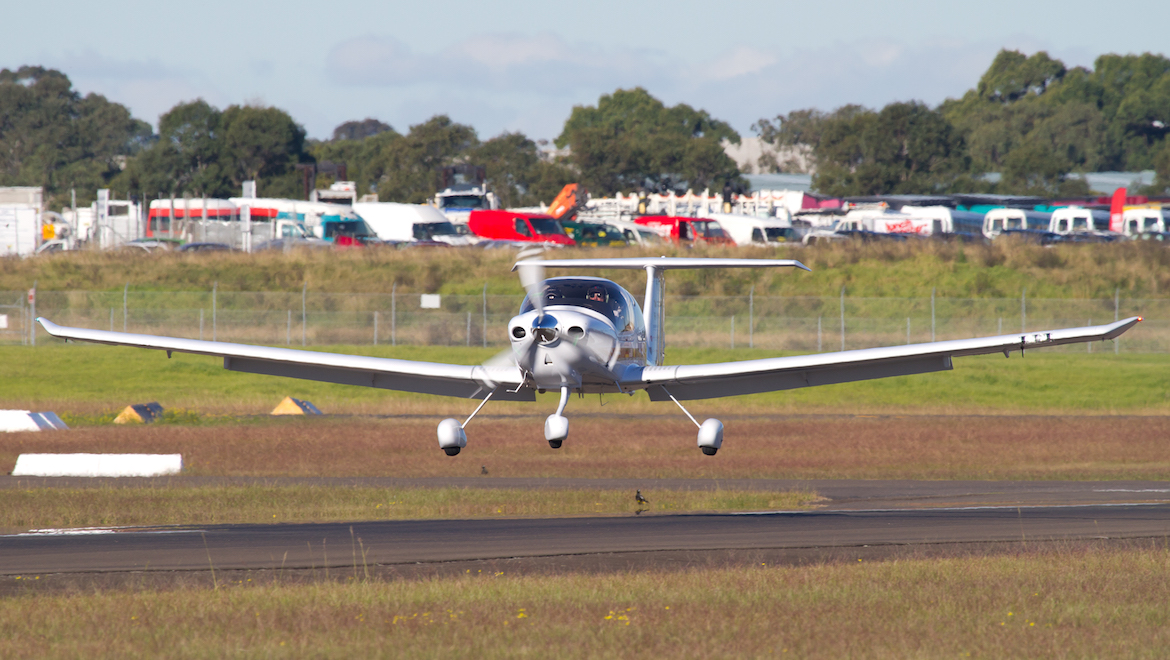
The Diamond ring
While the DA40 and its smaller sibling, the two-seat DA20, fill the ranks of trainers and tourers, there is a good deal happening elsewhere in the Diamond ranks. The twin-engined DA42 has moved comfortably into a number of Diamond training fleets, providing the smooth transition in design and philosophy for multi-engine operations.
Like the DA40, the DA42 also offers avgas-powered and diesel options. The latest version of this light twin is the DA42V1 (Dash Six) and represents a very evolved airframe from the first DA42. Gone are the original Thielert engines, replaced by impressive 340hp (255kW) Austro AE300 diesel engines.
The V1 also boasts improved performance through 21 aerodynamic improvements ranging from flush rivets and minimised seams on the fuselage to weight saving through an increased use of carbon fibre. The result is an aircraft with a maximum advertised true air speed (TAS) of 197kt.
On a recent delivery flight of new DA42-V1s from Austria to Malaysia, the aircraft were flown between 11,000ft and 17,000ft with a TAS consistently above 170kt and even up to 200kt. The climb rate from mean sea level to 15,000ft was most of the time more than 1,000ft/min. Both aircraft were flown with power settings between 63 per cent and 79 per cent burning only 0.252l/nm.
Another variant of the DA42 is the multi-purpose platform Guardian. It is a lightweight composite aircraft that has the ability to carry out an impressive array of airborne sensing tasks. Able to carry easily interchangeable, multi-functional aerial sensor equipment, like an EO/IR gimbal for surveillance and reconnaissance missions, airborne laser scanners or large format digital aerial cameras, the Guardian’s versatility is as varied as the aerials that extend from its airframe.
With the suspension of the “D-Jet” single-engined jet program, the company’s focus has shifted to the twin-engined DA52-VII. In profile, the aircraft resembles the DA42, but it is a larger machine capable of carrying five adults or four adults and three children, with room for baggage.
Powered by two Austro 180hp (135kW) AE300 turbo-diesel engines, the DA52 made its maiden flight in April 2012 and is set for release next year.
Next in line is the single-engined turboprop – the DA50, which was unveiled this year. The proof-of-concept mockup made its debut at the Aero Friedrichshafen show in Germany in April and is the evolution of the DA50 Magnum piston single, except with a 450shp (335kW) AI-450S turbine from Ukraine’s Motor Sich up the front. There seems to be an array of options for Diamond in the years ahead.
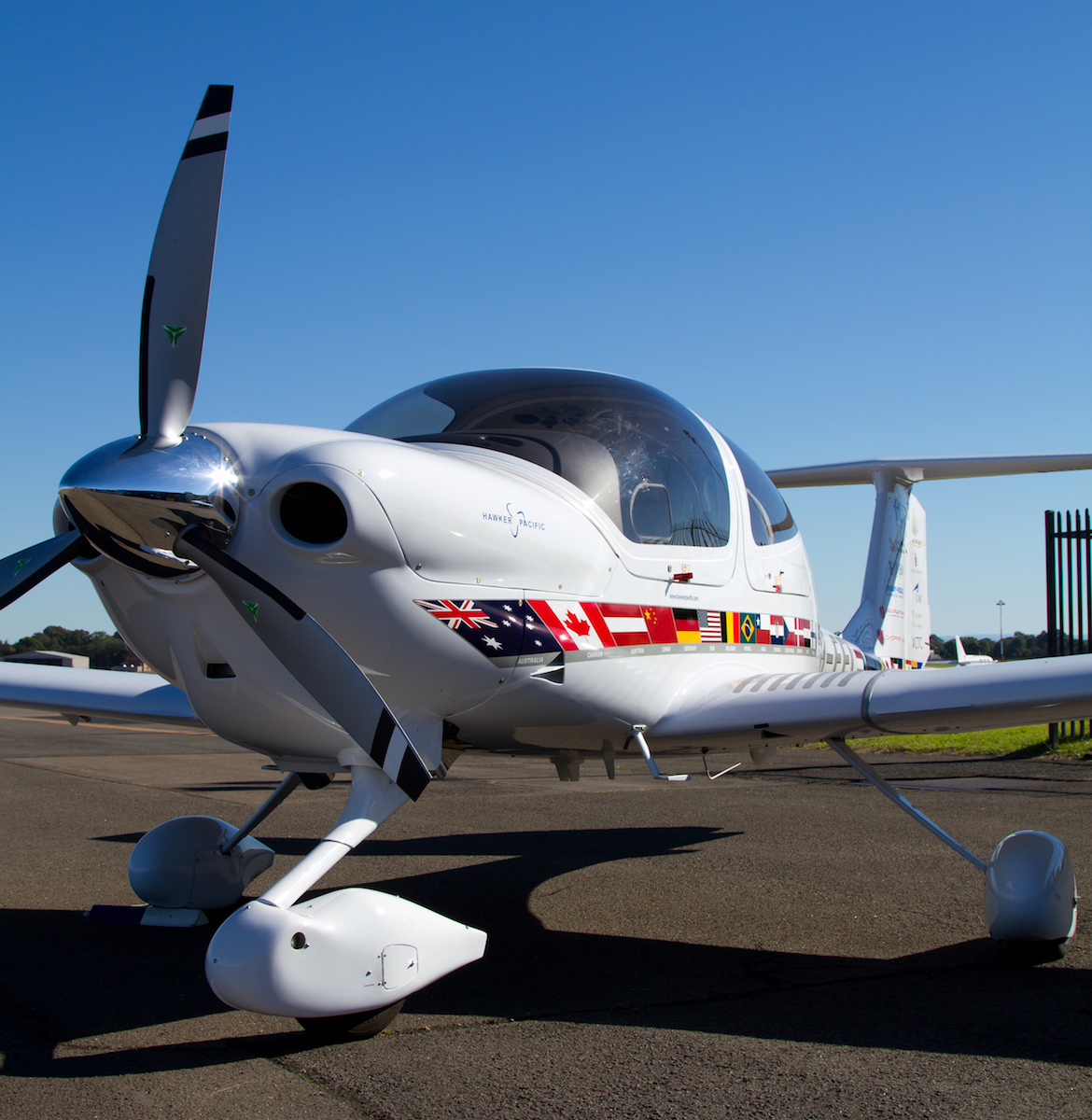
Diamond revisited
Yet for all of the proof-of-concept models and high-tech airframes, the DA40 XLT cuts an impressive form as it sits on the tarmac and it would be a shame not to go for a short flight.
Once again seated in the comfort of the DA40’s cockpit, I am reacquainted with its wonderful finish and clean instrument panel by virtue of the huge Garmin screens. Amid a line of ageing training aircraft we taxi out for a departure to the west of Bankstown before returning to fly a few circuits.
The synthetic vision technology gives the instrument panel an incredible sense of virtual reality, but it is the smooth and relatively quiet acceleration of the DA40 that is especially pleasing. Around 59kt the airspeed tape and the aircraft tells me it’s time to fly and we lift off with an impressive rate of climb. The flaps are retracted and we climb away at 70kt and 1,000ft/min.
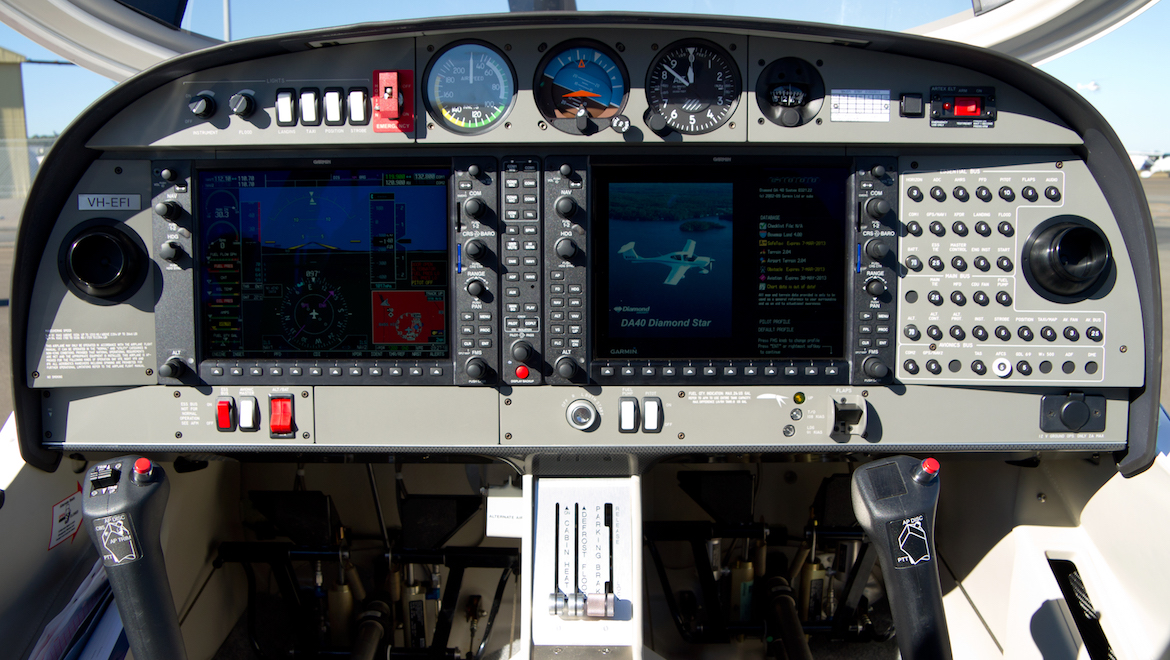
The power for the climb is set at 2,400rpm with the throttle full and an “over-square” setting. The handling is wonderful, with my wrist resting on my knee and only the subtlest inputs required to pitch the aircraft’s nose down before wheeling back to the east to return to Bankstown. This aeroplane is cruising at around 150kt TAS and can be comfortably flown with the thumb and forefinger in smooth air.
Returning to the circuit, I anticipate the DA40’s enthusiasm to continue at pace and reduce the power to 20” in level flight to slowly bring the airspeed back into the range for the first stage of flap. The slower traffic ahead necessitates that I dirty the aeroplane up by extending full flap and flying level at only around 75kt.
Even so, the handling of this aeroplane is responsive with a good deal of margin over the stall still remaining.
On the final approach to land I sit at 70kt and push the pitch lever fully forward before bleeding the speed back to 65kt over the threshold. It is in this critical phase of flight that smooth, responsive controls translate into straightforward handling. That in turn makes the DA40 a simple aircraft to land.
I then increase the power and away we go again. By virtue of the aircraft ahead striking a bird, my session of circuits includes a go-around and again, the pitch forces are easily managed and the performance impressive.
Finally, it’s time to call a halt to proceedings and a full-stop landing is made on runway centre with ease.
Shutting down the DA40XLT at its parking bay, I remember how impressed I was with this aircraft in 2009 and nothing has changed from that perspective.
Diamond Aircraft has continued to move forward and branch out, but I can’t help but feel that in so many ways the DA40 is core to that success.
In reality, I may well have been able to review the new DA40XLT’s enhanced cabin without taking to the air. I may also have been able to report on Diamond’s emerging new types and growth across the globe without having seen the propeller turn over.
However, the truth be known, I am always a pilot at heart and only when the runway has fallen away from the wheels can I truly say that this was a case of “Diamond revisited”.

This story first appeared in the July 2013 edition of Australian Aviation. To read more stories like this, subscribe here.













